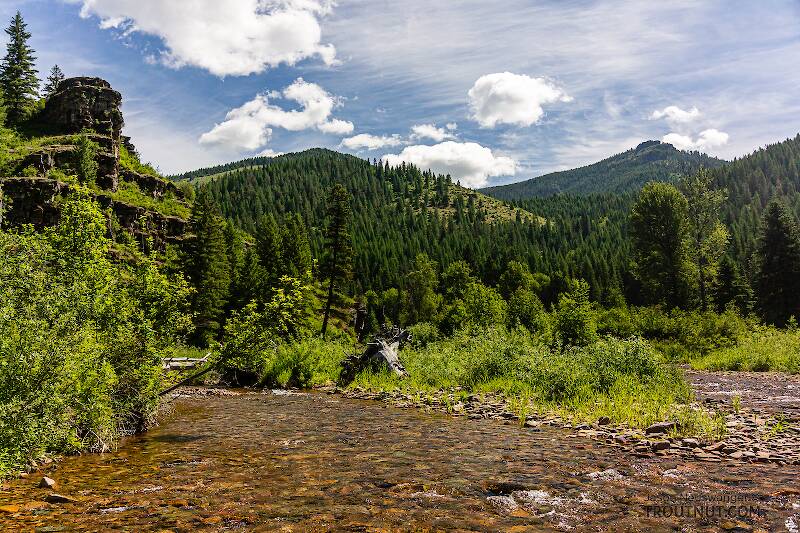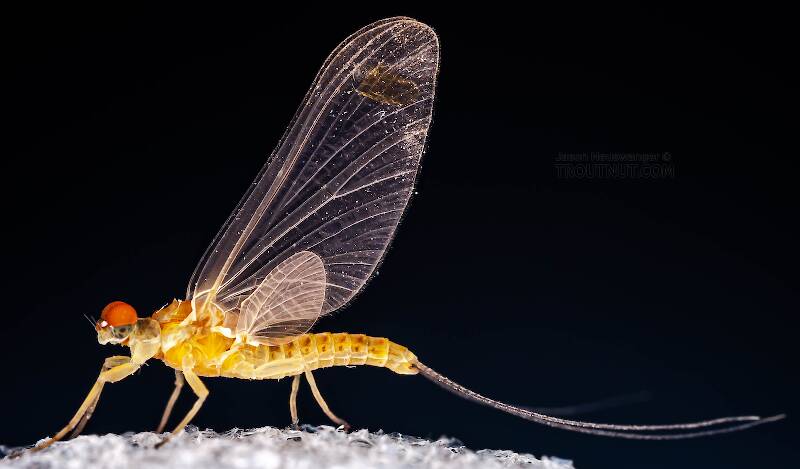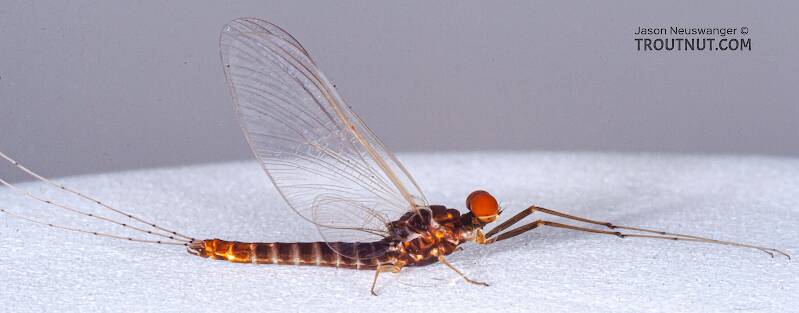
Hex Mayflies
Hexagenia limbata
The famous nocturnal Hex hatch of the Midwest (and a few other lucky locations) stirs to the surface mythically large brown trout that only touch streamers for the rest of the year.
Featured on the forum

This specimen appears to be of the same species as this one collected in the same spot two months earlier. The identification of both is tentative. This one suffered some physical damage before being photographed, too, so the colors aren't totally natural. I was mostly photographing it to test out some new camera setting idea, which worked really well for a couple of closeups.

Troutnut is a project started in 2003 by salmonid ecologist Jason "Troutnut" Neuswanger to help anglers and
fly tyers unabashedly embrace the entomological side of the sport. Learn more about Troutnut or
support the project for an enhanced experience here.
Hendricksons
Like most common names,"Hendrickson" can refer to more than one taxon. They're previewed below, along with 8 specimens. For more detail click through to the scientific names.
Mayfly Species Ephemerella subvaria
These are pretty much always called Hendricksons.
The Hendrickson hatch is almost synonymous with fly fishing in America. It has been romanticized by our finest writers, enshrined on an untouchable pedestal next to Theodore Gordon, bamboo, and the Beaverkill.
The fame is well-deserved. Ephemerella subvaria is a prolific species which drives trout to gorge themselves. Its subtleties demand the best of us as anglers, and meeting the challenge pays off handsomely in bent graphite and screaming reels.
The fame is well-deserved. Ephemerella subvaria is a prolific species which drives trout to gorge themselves. Its subtleties demand the best of us as anglers, and meeting the challenge pays off handsomely in bent graphite and screaming reels.

I collected this female Hendrickson dun and a male in the pool on the Beaverkill where the popular Hendrickson pattern was first created. She is descended from mayfly royalty.
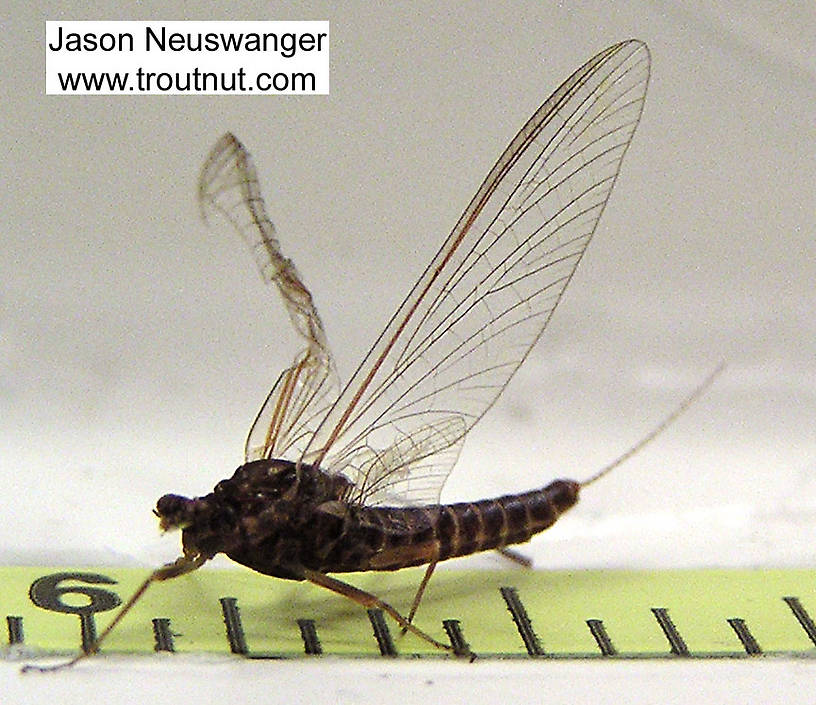
This one's a bit bedraggled because it was rainy and I had a hard time keeping anything dry, including the container I was putting mayflies in. I was practically juggling up there balanced on a rock trying to catch mayflies and trout at the same time.
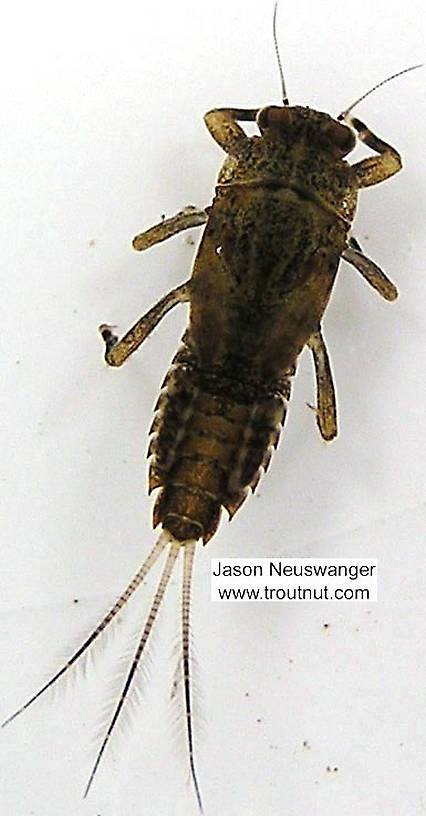
This is another unusual brown Ephemerella nymph. The "fan-tail" which defines the Ephemerella genus is particularly evident on this specimen.
See 31 more specimens...
Mayfly Species Ephemerella invaria
These are very rarely called Hendricksons.
This species, the primary "Sulphur" hatch, stirs many feelings in the angler. There is nostalgia for days when everything clicked and large, selective trout were brought to hand. There is the bewildering memory of towering clouds of spinners which promise great fishing and then vanish back into the aspens as night falls. There is frustration from the maddening selectivity with which trout approach the emerging duns--a vexing challenge that, for some of us, is the source of our excitement when Sulphur time rolls around.
Ephemerella invaria is one of the two species frequently known as Sulphurs (the other is Ephemerella dorothea). There used to be a third, Ephemerella rotunda, but entomologists recently discovered that invaria and rotunda are a single species with an incredible range of individual variation. This variation and the similarity to the also variable dorothea make telling them apart exceptionally tricky.
As the combination of two already prolific species, this has become the most abundant of all mayfly species in Eastern and Midwestern trout streams.
Ephemerella invaria is one of the two species frequently known as Sulphurs (the other is Ephemerella dorothea). There used to be a third, Ephemerella rotunda, but entomologists recently discovered that invaria and rotunda are a single species with an incredible range of individual variation. This variation and the similarity to the also variable dorothea make telling them apart exceptionally tricky.
As the combination of two already prolific species, this has become the most abundant of all mayfly species in Eastern and Midwestern trout streams.
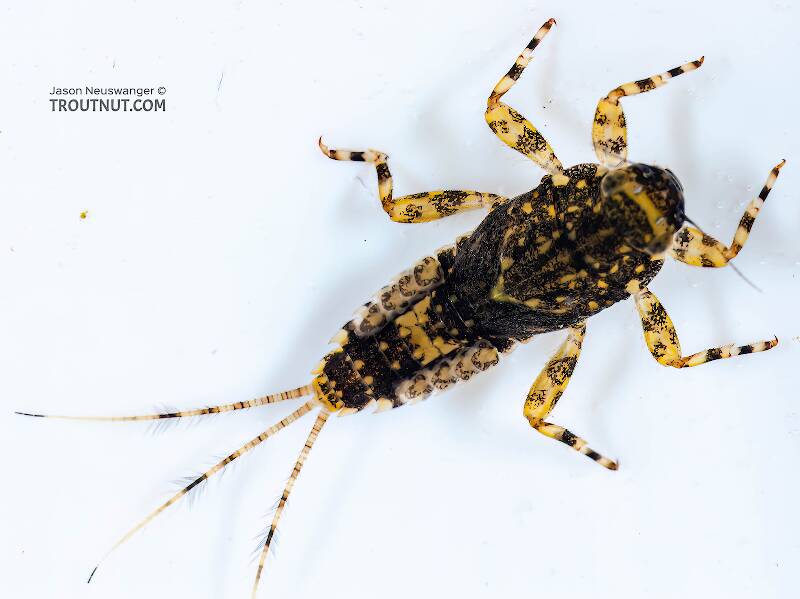
This small Ephemerella invaria nymph was at least a month away from emergence.
See 42 more specimens...
Mayfly Species Ephemerella needhami
These are very rarely called Hendricksons.
This small and slightly noteworthy mayfly appears during the finest hours of the year. Ernest Schwiebert describes an Ephemerella needhami day in Matching the Hatch:
I have not fished a needhami emergence, but the exquisite nymphs show up often (though never abundantly) in my samples.
"It was a wonderul morning, with a sky of indescribable blue and big, clean-looking cumulus clouds, and the water was sparkling and alive. You have seen the water with that lively look; you have also seen it dead and uninviting in a way that dampens the enthusiasm the moment you wade out into the current."
I have not fished a needhami emergence, but the exquisite nymphs show up often (though never abundantly) in my samples.
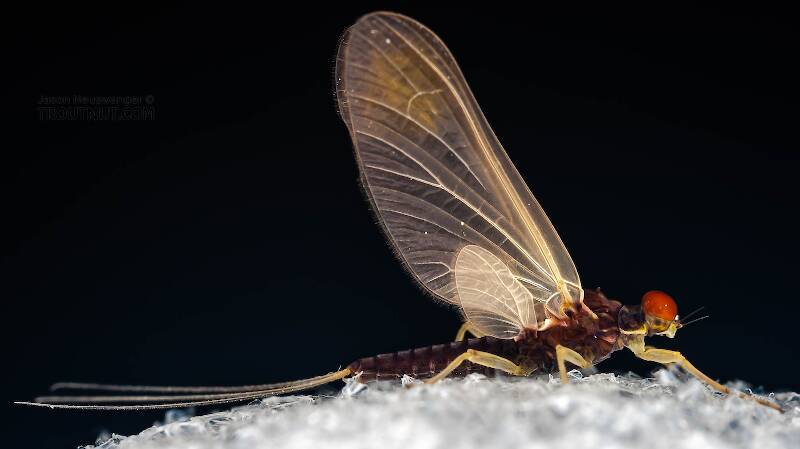
See the comments for an interesting discussion of the identification of this dun.
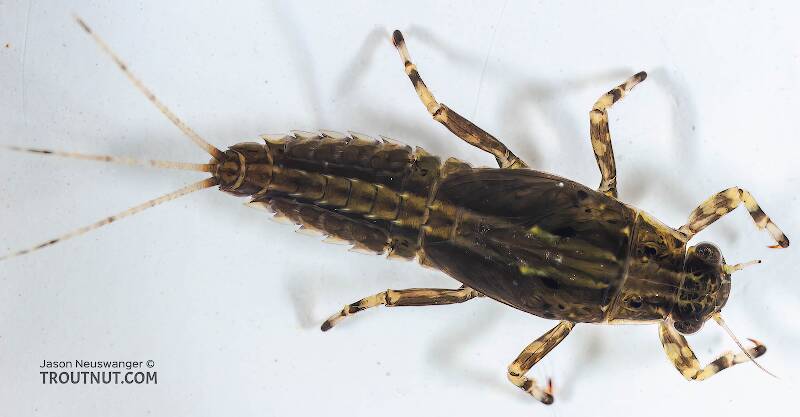
I photographed three strange striped Ephemerella nymphs from the same trip on the same river: this one, a brown one, and a very very striped one. I have tentatively put them all in Ephemerella needhami for now.
See 7 more specimens...
References
- Schwiebert, Ernest G. 1955. Matching the Hatch. MacMillan Publishing Company.

